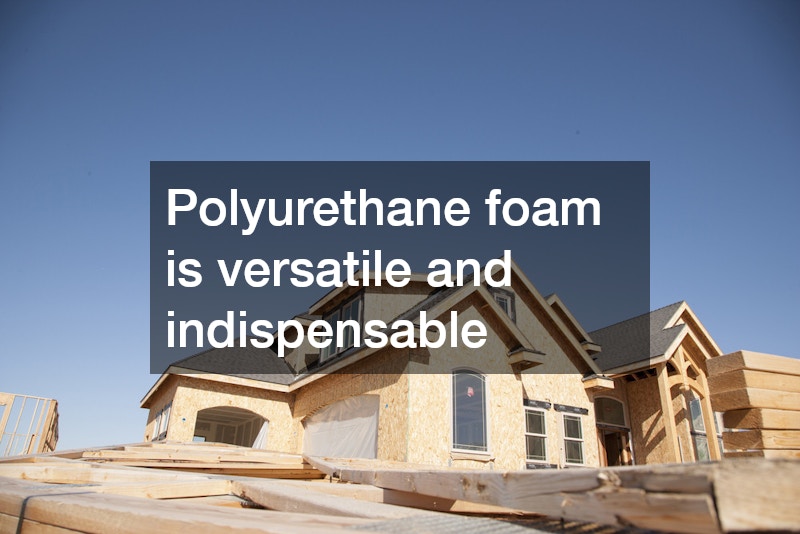Polyurethane foam fabrication plays a pivotal role in numerous industries due to its versatile characteristics and applications. Being a polymer composed of organic units connected by urethane links, it features prominently in both consumer and industrial products.
How is Polyurethane Foam Fabricated?
Raw Materials and Chemical Processes
The fabrication of polyurethane foam starts with two primary chemicals: polyols and isocyanates. When combined through a chemical reaction known as polymerization, these components form the polyurethane backbone.
Adjustments in the chemical formulation can tailor the foam’s properties, allowing it to be adapted to specific applications and functions.
Fabrication Techniques
The two primary techniques of polyurethane foam fabrication are the slabstock and molded foam processes. Slabstock processing involves pouring the reactive mix onto a conveyor to form large continuous sheets, which are later cut to desired forms. This process is cost-effective and efficient for producing large volumes of flexible foam for various uses.
Quality Control and Testing
The stringent quality control measures in place are critical to ensuring that manufactured polyurethane foam complies with industry standards and specifications. Comprehensive testing involves examining the foam’s density, hardness, and resilience, among other physical properties. These measurements are crucial in maintaining consistency and quality across batches.
What are the Types of Polyurethane Foam?
Flexible Polyurethane Foam
Flexible polyurethane foam is known for its cushioning properties, making it ideal for use in furniture and automotive seating. Its capacity to absorb energy and maintain shape after compression is indispensable in enhancing comfort and support. The open-cell architecture of flexible polyurethane foam permits air to pass through, adding to its breathability and comfort.
Rigid Polyurethane Foam
Characterized by its excellent insulation properties, rigid polyurethane foam is a staple in the construction and refrigeration industries. Its low thermal conductivity allows it to act as a formidable barrier against heat transfer. Used in building insulation panels, this foam contributes to energy efficiency by reducing heating and cooling demands.
In the realm of construction, rigid foam plays a key role in enhancing the structural integrity and durability of buildings. It is also pivotal in maintaining temperature control in appliances such as refrigerators and freezers, ensuring energy-efficient performance. This foam’s closed-cell structure minimizes moisture absorption and provides soundproofing benefits.
Spray Polyurethane Foam
Spray polyurethane foam (SPF) is utilized widely for its insulation and air-sealing capabilities. Applied on-site through a spray gun, it expands rapidly upon contact to fill gaps and create a continuous barrier. This unique application method contributes significantly to the foam’s ability to seal air leaks and enhance energy efficiency.
The two variants of SPF—open-cell and closed-cell foam—offer different benefits. Open-cell foam is softer and more flexible, making it suitable for interior applications, while closed-cell foam is denser and provides higher thermal resistance, ideal for exterior applications.
Why is Polyurethane Foam Used in Various Industries?
Benefits in the Construction Industry
Polyurethane foam is integral to construction, primarily for its superior insulation properties. Its capacity to fill voids and impermeability to water makes it an excellent choice for enhancing a building’s energy efficiency and reducing utility costs. By effectively minimizing thermal bridging, it significantly enhances the overall thermal envelope of structures.
In addition to insulation, polyurethane foam strengthens construction materials, lending additional structural support. Its ability to integrate seamlessly with various building materials makes it a versatile choice for builders and architects. This adaptability extends the application of polyurethane foam to walls, roofs, and foundations.
Applications in the Automotive Industry
In the automotive industry, polyurethane foam significantly enhances comfort through its use in seats, armrests, and headrests. Its lightweight nature contributes to increased fuel efficiency, an essential factor in modern vehicle design. The foam’s impact-absorbing properties are crucial for occupant safety during collisions.
Polyurethane foam is not just limited to seating in the automotive sector; it is also employed for insulation and soundproofing in vehicles. This role reduces noise, vibration, and harshness (NVH) levels, enhancing ride quality and passenger experience. Additionally, the ability to mold the foam into custom shapes aids in maximizing cabin space without sacrificing comfort.
Role in the Furniture and Bedding Industry
Polyurethane foam’s use in furniture and bedding enhances comfort and support. Its versatility in being molded into various shapes and sizes allows manufacturers to design ergonomic furniture that meets consumer needs. The foam’s durability ensures that furniture and mattresses retain their shape and comfort over time, adding value for consumers. The resilience of polyurethane foam contributes to the extended lifespan of furniture products. Adjusting the foam’s density and firmness allows for tailored sleeping surfaces that cater to individual preferences.
The expansive role of polyurethane foam fabrication across industries highlights its versatility and indispensable nature. From construction and automotive to furniture, this material has continually adapted to meet varied demands. Future advancements promise to further align the benefits of polyurethane foam with sustainability and performance enhancement measures.
.


